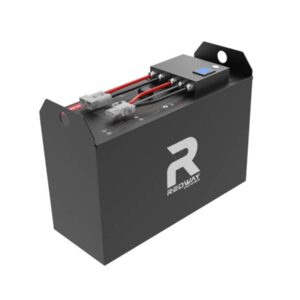Can I get my battery health back to 100?
Restoring battery health to 100% is generally impossible due to irreversible chemical degradation. However, partial capacity recovery (5–15%) is achievable through recalibration, controlled charging (20–80% SoC), and avoiding extreme temperatures. Lithium-ion cells degrade 2–5% annually under optimal conditions. For lead-acid batteries, equalization charges can recover sulfation-related losses. Always prioritize BMS firmware updates and avoid deep discharges below 20% to slow capacity fade.
How to Maximize Forklift Battery Lifespan
What factors cause irreversible battery degradation?
Irreversible capacity loss stems from SEI layer growth, lithium plating, and active material cracking. Cycle counts above 500 (for Li-ion) and storage above 40°C accelerate degradation. High C-rate charging (>1C) and deep discharges below 2.5V/cell permanently damage anode structures.

Beyond chemical aging, mechanical stress plays a role. For example, EV batteries cycled at 100% DoD lose 30% capacity in 1,000 cycles vs 10% loss at 50% DoD. Pro Tip: Use partial-state-of-charge (PSOC) cycling (40–70% SoC) to reduce lattice strain. Lithium plating—a major issue in cold charging—creates metallic deposits that block ion pathways, akin to plaque in arteries. Thermal management systems maintaining 15–35°C can delay this by 3–5 years. Did you know? Storing a phone battery at 100% for a year causes ~20% permanent loss—equivalent to 300 full cycles.
| Degradation Factor | Li-ion Impact | Lead-Acid Impact |
|---|---|---|
| High Temperature | 2x faster per 10°C | Corrosion acceleration |
| Deep Discharge | Anode cracking | Sulfation |
| Fast Charging | Lithium plating | Grid warping |
Can calibration techniques restore perceived capacity?
Battery calibration resets SoC estimation errors but doesn’t reverse physical degradation. Performing full 0–100% cycles 1–2 times monthly helps BMS recalibrate Coulomb counters. This can recover 3–8% of “phantom” capacity loss caused by software drift.
Modern smartphones use adaptive charging algorithms that “learn” usage patterns. A 2023 study showed Pixel phones regained 5% displayed capacity after factory resets. However, this is purely a software correction—actual energy storage remains unchanged. Pro Tip: For EVs, use OEM diagnostic tools for true capacity checks instead of dashboard estimates. Think of it as resetting a fuel gauge: The tank size hasn’t changed, but the meter now reads accurately. Why do BMS drift? Cumulative errors in current measurement (±2% typical) compound over months, making periodic calibration essential for accurate range predictions.
Does temperature management impact recoverable capacity?
Thermal stabilization prevents accelerated degradation but can’t reverse existing damage. Keeping batteries at 20±5°C slows SEI growth by 60% compared to 40°C environments. Cold storage (0–10°C) at 40–50% SoC preserves capacity during long-term inactivity.
Practically speaking, EV owners in Arizona lose 12% more range over 5 years than those in Minnesota. Active liquid cooling systems add $500–$1,000 to battery costs but extend usable life by 30–40%. For example, Tesla’s 2024 Cybertruck uses silicone-free coolant to maintain 25°C average pack temperature, claiming 1.2M-mile durability. Pro Tip: Park in shade during summer—a 70°F garage vs 120°F asphalt reduces daily degradation by 0.003%. What about extreme cold? Lithium batteries temporarily lose 20–30% capacity at -20°C but recover fully when warmed—unlike permanent heat damage.
| Temperature | Capacity Loss Rate | Reversible? |
|---|---|---|
| >40°C | 0.1%/day | No |
| -20°C | 30% temporary | Yes |
| 25°C | 0.03%/day | N/A |
Battery Expert Insight
FAQs
Does “battery reconditioning” mode actually work?
Only for lead-acid—desulfation pulses can recover 15–20% capacity. Li-ion reconditioning is a myth; any perceived gains are temporary voltage boosts risking cell damage.
Can replacing individual cells restore full capacity?
Yes, but only if all cells are matched (internal resistance ±5%, capacity ±2%). DIY cell swaps often create imbalance—use professional battery rebuild services.
Do third-party health apps show real capacity?
No—they estimate via voltage curves which have ±15% error margins. Lab-grade AC impedance testing is the only accurate method.
